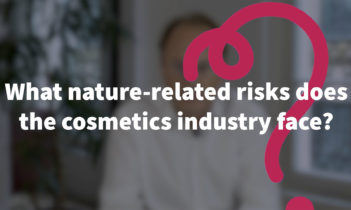
Exploring the evolving landscape of sustainable packaging under the influence of PPWR regulation and the importance of transparent communication with consumers.
In brief:
- Discover how the European Packaging and Packaging Waste Regulation (PPWR) is reshaping the sustainability landscape within the fast-moving consumer goods industry.
- Explore innovative approaches and best practices for achieving compliance with PPWR while maintaining product integrity.
- Learn about the key challenges and opportunities faced by companies in adapting to PPWR.
- Understand the implications of PPWR on packaging design, material selection and waste management strategies.
The changing EU regulatory landscape in packaging
Packaging in the consumer goods industry serves as both a vessel for products and a vital element of branding, functionality and sustainability. Yet, as consumer awareness of environmental issues grows, so do sustainable expectations of the industry’s packaging practices. Packaging waste in particular has come under scrutiny, prompting regulatory bodies to tighten their grip through sustainability standards, as outlined in the PPWR, recently voted by the European Parliament.
In response to this mounting pressure, companies find themselves compelled to reevaluate their packaging strategies. They must strike a balance between aligning with their own sustainability goals while navigating complex regulatory requirements.
The environmental impact of packaging cannot be overstated; the European Commission estimates that 40% of plastics and 50% of paper used in the EU is destined for packaging. Furthermore, the European Parliament found that packaging accounts for a staggering 36% of municipal solid waste.
As consumer goods companies work to tackle these challenges, the need for innovative and sustainable packaging solutions has never been more urgent. If companies don’t take action, the European Commission predicts that packaging waste will increase by approximately 19% by 2030. Embracing a circular economy approach to packaging offers a promising solution, one that may reduce reliance on natural resources while also contributing to broader sustainability objectives such as climate impact reduction and biodiversity preservation.
What are the components to consider when navigating PPWR compliance?
The PPWR lays out several sustainability requirements that are designed to reduce packaging waste and promote a circular economy, setting out requirements for all packaging in the EU market and 2030 and 2040 targets for minimum recycled content in plastic packaging. The regulation outlines three main objectives:
- Prevent packaging waste generation, reduce and restrict unnecessary packaging and promote reusable and refillable packaging solutions;
- Boost closed-loop recycling by making all packaging on the EU market recyclable by 2030; and
- Reduce demand for virgin resources and create a mainstream market for secondary raw materials, including an increased usage of recycled plastics in packaging.
The European Commission emphasizes that these four outlined objectives will ideally benefit both consumers and the industry as a whole. Consumers will have increased access to more reusable packaging options, less unnecessary packaging and clear labels that highlight how to recycle packaging. The consumer goods industry will benefit from this regulation through new business opportunities, a decreased dependence on raw materials and accelerated progress toward net zero by 2050.
The touchpoints outlined by PPWR may affect various industries in different ways. For example, food and beverage companies may need to overhaul their packaging designs for compliance. By 2030, PPWR will impose anticipated reuse targets for beverage packaging, with exceptions for milk, wine and spirits. Additionally, beverage and takeout meal distributors will need to offer at least 10% of their products in reusable packaging by the same deadline.
Cosmetics and personal care companies are also facing the need to innovate, particularly utilizing sustainable materials and enhancing transparent communication to ensure compliance and satisfy environmentally conscious consumers. For instance, from 42 months of PPWR’s enactment, packaging placed on the market must have a label detailing its material composition, aiding consumer sorting. Additionally, by 2030, policymakers will need to adopt a minimum percentage – notably 30% for contact-sensitive packaging made primarily from polyethylene terephthalate (PET) – of recycled content recovered from post-consumer plastic waste in packaging materials.
The draft regulation was presented to the European Parliament for a vote in its April plenary session, which ran between April 22 and 25 in Strasbourg, where it was voted to advance the adoption process. However, the regulation is still subject to legal checks, which likely won’t be decided until after the European Parliament elections in June 2024, adding an extra layer of urgency for the text to be finalized and entered into force by July 2024. The EU also intends to define standards for packaging and provide guidelines for Design for Recycling (DFR) by the end of 2025 to aid this timeline, with the goal of having 75% of the European population adhere to these standards by 2035.

As a proposed timeline, the European Commission will begin adopting the methodology for calculating and verifying the percentage of recycled packaging content starting in December 2026, and it shall establish the recycling criteria and performance grades by January 2028. PPWR’s initial recycling and reuse targets will be enforced starting in January 2030, and innovative packaging will only be allowed on the market for a maximum of five years. Stricter provisions will be enforced later, such as ensuring that packaging can be collected separately and with higher grade quality. By 2040, companies will need to meet PPWR’s secondary recycled content and reuse targets, including a minimum percentage of recycled content from post-consumer plastic waste and 70% of reusable packaging actually being reused.
The Commission will establish the criteria and recycling performance grades through delegated acts, and it will devise methodologies to assess recyclability at scale for various packaging types. As seen below, packaging failing to meet these standards, particularly those with a recyclability assessment under 70%, will be deemed non-recyclable, and financial contributions by producers for extended producer responsibility will be adjusted based on recyclability performance grades. Any innovative packaging recyclability must be proven within 5 years from the date of entering the market.

Table: Assessment of recyclability per unit, in terms of weighting
Utilizing PPWR to boost consumer engagement and transparency
It’s especially important for companies to consider their consumers’ role in PPWR compliance, as their engagement will be needed during the use phase of a product.
Luckily, the objectives set out by the PPWR aim to provide standardization and clarity around packaging for both companies and consumers alike. While companies will be able to follow the same framework for compliance, the regulation’s labelling requirements will help consumers better understand what a product’s packaging is made of and how to dispose of it in the proper waste bucket. Labelling will be further clarified because waste collection containers will carry the same labels as packaging, and the same symbols will be utilized throughout the EU.
The call for transparency will have indirect benefits regarding consumer engagement. By standardizing packaging frameworks and educating consumers about the environmental benefits of sustainable packaging and how they can support sustainability goals, companies that enthusiastically adapt to the PPWR could see increased brand trust and loyalty. Consumers value authenticity and accuracy around sustainability communications, and having clear guidelines around what labels to put on packaging will allow consumers to receive consistent information about packaging composition and disposal.
Sustainable packaging strategies for fast-moving consumer goods companies
As set out by Articles 11 and 29 of the PPWR, packaging is deemed reusable if it meets the following:
- Designed and marketed for continual reuse or refilling;
- Conceived and designed to accomplish as many rotations as possible under normal conditions;
- Fulfills consumer health, safety and hygiene requirements;
- Can be emptied or unloaded without damage;
- Can be emptied, unloaded, refilled or reloaded while meeting safety and hygiene standards, including food safety;
- Can be reconditioned without compromising functionality;
- Can be emptied, unloaded, refilled or reloaded while maintaining a product’s quality, safety and label attachment; and
- Fulfills recyclable packaging requirements once it becomes waste.
Additionally, packaging needs to meet specific recyclability requirements upon becoming waste, and compliance with these conditions must be demonstrated in technical information. However, as of right now neither re-use nor refill targets have been defined for cosmetic products, so the only implications for the cosmetic industry now are targets related to transport packaging.
While the new guidelines set forth by the PPWR may bring restrictions and challenges to packaging design and innovation, they also present opportunities for creative alternatives and the development of innovative materials to meet sustainability requirements. Some such alternatives could include, for example:
- Lightweighting: Lightweighting is the process by which a company adjusts or redesigns a product’s packaging to reduce the overall weight without compromising the protection of the product.
- Refillable packaging: Refillable packaging allows the consumer to reuse old packaging when repurchasing a product, which reduces waste and saves the company money.
- Biodegradable materials: Biodegradable materials break down more easily than their traditional counterparts, which minimizes waste. However, companies should tread carefully when using biodegradable materials as a packaging solution, as the PPWR requires companies to highlight the environmental benefits of their specific use, their value to the circular economy and proper labels around how long it will take to biodegrade, under which circumstances and in what type of environment. These guidelines will ideally prevent companies from using these materials to continue using single-use packaging that’s likely to be littered. Furthermore, companies should be careful to avoid environmental trade-offs when opting for biodegradable materials, such as land use changes, deforestation or biodiversity loss.
What can you do now?
The EU Parliament reviewed and approved the draft regulation during its April plenary session in Strasbourg, and the delegated acts submission deadline is slated for August 2025. While these deadlines may seem far off now, companies should start planning their course of action for the regulation’s implementation starting in 2026.
For right now, companies should get familiar with the guidelines that the PPWR puts forth and how their product portfolio will be impacted. Understand which products will be the most impacted and start researching potential solutions that both reduce dependence on virgin raw materials and remain true to your brand.
Please note that information in this article does not constitute legal advice. This is a general summary based on information accessed by Quantis.
CONTRIBUTOR(S)
+ Emmanuel Hembert, Cosmetics & Personal Care Lead
+ Paul Spitzmuller, Strategist
Latest resources

What nature-related risks does the pharma industry face?
By protecting biodiversity and natural ecosystems, the pharmaceutical industry can mitigate risks and build long-term resilience.

World Cocoa Foundation publishes first ever greenhouse gas accounting standard for the cocoa sector
World Cocoa Foundation & Quantis launch first-ever GHG standard, helping the cocoa sector measure, report, and cut emissions consistently.

Accelerating progress to 2030 climate targets
Allon Zeitoun and Géraldine Noé sit down to discuss the progress made, challenges ahead and what companies can do to accelerate action to 2030 targets.


